
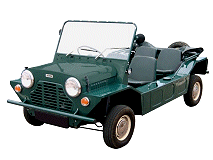

|
 |
|
|
Cars
and the Car Industry Motorcycles Scooters Road
Signs Licences Driving
Tests Road
Tax The Highway
Code Reg
Plate Numbers
Haulage Lorries and Trucks Vans London Transport Buses London Underground Milk and Ice Cream Vans & Chimes Emergency Services Hovercraft Passenger Airlines and Aircraft Charter Airlines London Airports British Railways Cruise Lines, Liners and Ferries Military World Speed Records: Land Water Two Wheels Air Steam Trains Electric Trains Other Trains Transport Industry Events and Timeline - 1950 to 1969 Transport Videos and Links Metrication TV / Radio Detector Vans Major Road Construction and Motorway Services |
 |
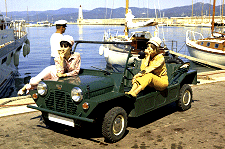 |
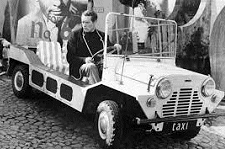 |
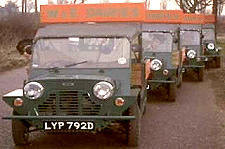 |
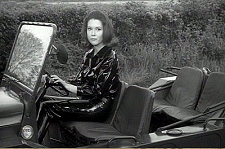 |
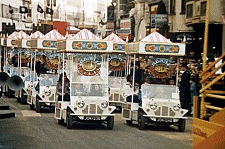 |
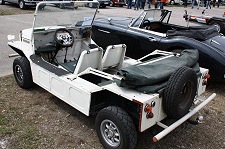 |
|
One of the more unlikely
production vehicles to surface during the Sixties, but one which achieved
cult status, and was also something of a fashion, was the Mini Moke.
When Alec Issigonis originally designed the Mini, he also had in planning
an additional vehicle that would share a number of its mechanical
parts but be a quite different end product. Based on the design of
the American military Jeep, it was a second attempt by Issigonis to
attract some of the military vehicle business away from Land Rover,
an ambition that had previously failed with the Nuffield Guppy. Code-named
'The Buckboard', the British Motor Corporation (BMC) had produced
prototype versions as early as 1959. |
 |
It
took nearly 22 seconds to reach 60mph with a top speed of around 65.
Original
'Mark 1' Mokes were fitted with a floor-mounted headlight dip switch
and a single windscreen wiper (which was not necessarily vital as
the windscreen could easily be unbolted and removed if not needed!).
Optional 'extras' included passenger seats, grab handles, heater,
windscreen washer and a removable canvas top, all of which had to
be fitted by the owner. The only colour option was a dark 'Spruce
Green'.
Crayford
Minis Heritage
Motor Centre The
Mini Moke Club |
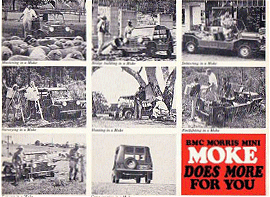
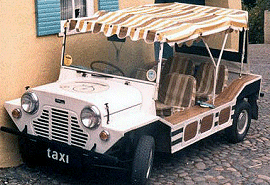
 |
|
|
All
Original Material Copyright SixtiesCity
Other individual owner copyrights may apply to Photographic Images |